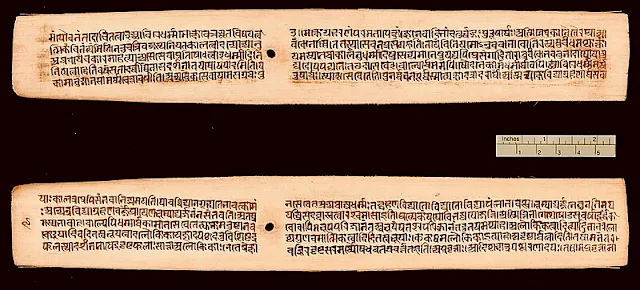Introduction:
The intricate tapestry of Indian culture
weaves together various ancient traditions, two of the most captivating being
the Kamasutra and yoga. Often perceived as disparate realms—one focusing on the
art of lovemaking and the other on spiritual enlightenment—these practices
share profound connections that merit exploration. In this comprehensive
analysis, we embark on a journey to unravel the nuanced relationship between
the Kamasutra and yoga, delving deep into their historical origins,
philosophical underpinnings, and practical manifestations.
Historical Context:
To understand the intertwined nature of
Kamasutra and yoga, we must first grasp their historical contexts. The
Kamasutra, attributed to the sage Vatsyayana, emerges as a seminal text on
human sexuality and relationships, dating back to the 2nd century CE. It
transcends mere instruction manuals, offering a holistic exploration of love,
desire, and the complexities of human relationships within the socio-cultural
milieu of ancient India.
In parallel, yoga emerges from the
spiritual and philosophical traditions of ancient India, with its roots
embedded in the Vedas and Upanishads. The Yoga Sutras of Patanjali, compiled
around 400 CE, serve as a guiding light, illuminating the path towards
self-realization and liberation through the systematic practice of yoga. From
its nascent stages to its diverse manifestations in contemporary times, yoga
has evolved as a multifaceted discipline encompassing physical postures
(asanas), breath control (pranayama), meditation (dhyana), and ethical precepts
(yamas and niyamas).
Interconnection of Principles:
At the core of both Kamasutra and yoga lie
fundamental principles that resonate across time and space, transcending the
boundaries of culture and tradition.
1. Embodiment and Sensuality:
The Kamasutra celebrates the physical body as a sacred vessel for sensual pleasure and self-expression. It offers a nuanced exploration of eroticism, advocating for the cultivation of intimacy and mutual pleasure within the context of loving relationships. Similarly, yoga acknowledges the body as a temple, emphasizing the importance of physical health and vitality as prerequisites for spiritual growth. Through the practice of asanas and pranayama, yoga cultivates a heightened awareness of bodily sensations, fostering a deeper connection between the individual self and the cosmic whole.
2. Mindfulness and Presence:
Both
Kamasutra and yoga extol the virtues of mindfulness and present-moment
awareness. Whether engaged in the art of lovemaking or performing yoga
postures, practitioners are encouraged to be fully present, attuned to the
subtleties of sensation, emotion, and thought. By cultivating mindfulness,
individuals can transcend the distractions of the past and future, anchoring
themselves in the richness of the present moment.
3. Balance and Moderation:
Central to
both disciplines is the principle of balance and moderation. While the
Kamasutra advocates for a harmonious equilibrium between pleasure and
restraint, yoga promotes moderation in all aspects of life, including diet,
sleep, and sensory stimulation. By striking a delicate balance between
indulgence and asceticism, practitioners can navigate the complexities of human
existence with grace and equanimity.
4. Connection and Union:
At its
essence, both Kamasutra and yoga are expressions of the universal yearning for
connection and union. Whether seeking intimacy with a beloved partner or
communion with the divine, practitioners aspire towards a state of oneness that
transcends the limitations of the ego. While the Kamasutra explores the
physical and emotional dimensions of union between lovers, yoga offers a path
towards spiritual awakening and self-realization. Through practices such as
meditation, mantra recitation, and devotion (bhakti), yoga fosters a deep sense
of interconnectedness with all beings and the cosmos at large.
Practical Overlaps:
While the philosophical parallels between
Kamasutra and yoga are evident, practical overlaps also abound, particularly
within the realms of Tantra and Kundalini yoga.
1. Tantra:
Often regarded as the
spiritual sibling of the Kamasutra, Tantra encompasses a diverse range of
esoteric practices aimed at harnessing and transmuting sexual energy for
spiritual growth. Drawing upon principles of ritual, visualization, and
breathwork, Tantra offers a holistic approach to intimacy that transcends mere
physical gratification. Through the cultivation of sacred sexuality,
practitioners can attain profound states of ecstasy and union, forging a deep
connection between the earthly and the divine.
2. Kundalini Yoga:
Rooted in the
Tantric tradition, Kundalini yoga focuses on awakening the dormant energy
(kundalini) believed to reside at the base of the spine. Through a combination
of physical postures, breathwork, and meditation, practitioners seek to
stimulate the upward movement of Kundalini energy, traversing the seven energy
centers (chakras) along the spinal column. As Kundalini energy ascends,
individuals may experience states of heightened awareness, ecstatic bliss, and
spiritual illumination, culminating in the union of individual consciousness
with the universal divine.
Conclusion:
In conclusion, the relationship between
Kamasutra and yoga transcends conventional categorizations, embodying a rich
tapestry of philosophical, spiritual, and practical insights. Whether exploring
the depths of human desire or ascending the peaks of spiritual realization,
practitioners of both disciplines share a common quest for meaning, connection,
and transcendence. By embracing the interplay between sensuality and
spirituality, intimacy and enlightenment, individuals can embark on a
transformative journey of self-discovery and holistic well-being. In essence,
the union of Kamasutra and yoga offers a path towards profound integration and
wholeness, guiding us towards the realization of our highest potential as human
beings.





